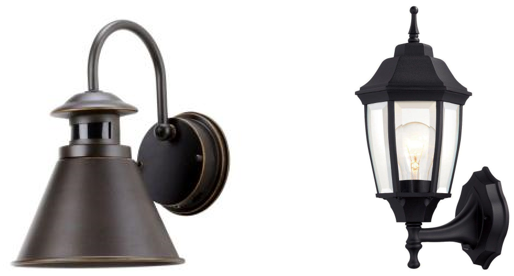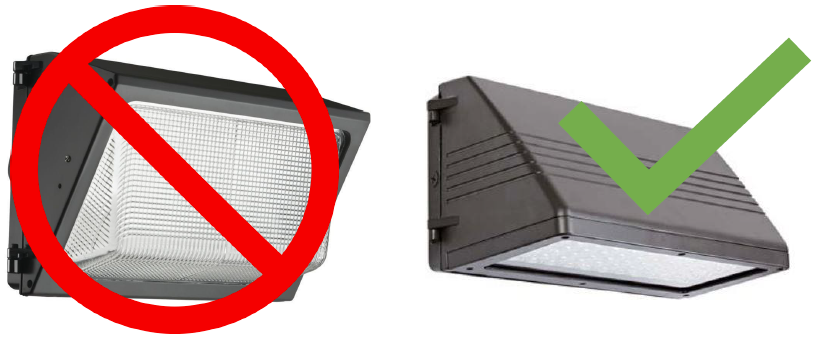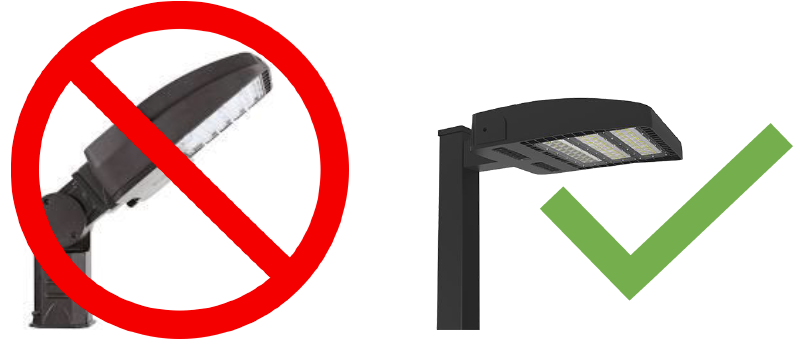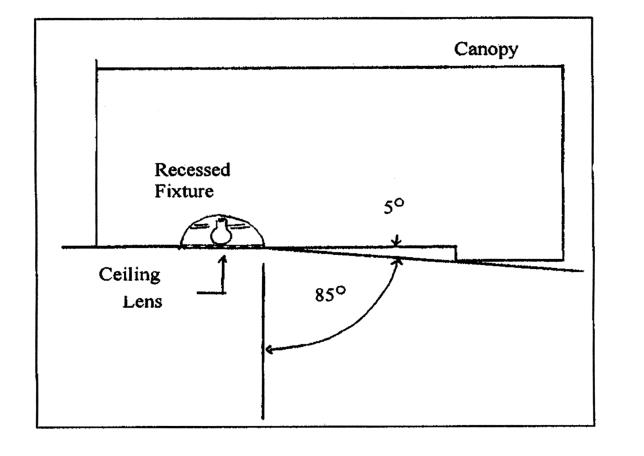Chapter 18.40
EXTERIOR LIGHTING STANDARDS
Sections:
18.40.030 General requirements.
18.40.040 Lighting plan requirements.
18.40.050 Lighting standards for uses within 50 feet of residential zones.
18.40.060 Open-air parking lot lighting.
18.40.080 Lighting of outdoor performance, sport and recreation facilities.
18.40.090 Architectural accent lighting.
18.40.100 Lighting of landscaping.
18.40.010 Purpose.
The purposes of this chapter are to: regulate exterior lighting in order to avoid unsafe and unpleasant conditions as the result of poorly designed or installed exterior lighting; discourage excessive lighting; regulate the type of light fixtures, lamps and standards; protect adjacent properties and residential units from the adverse effects associated with nonresidential and multifamily exterior lighting; protect Snoqualmie Valley views from the adverse effects of lighting; minimize light spill into the dark night sky. (Ord. 1722 § 1 (Exh. A (part)), 2020: Ord. 1256 § 1 (part), 2006).
18.40.020 Applicability.
A. A lighting plan shall be required for projects as follows:
1. When an exterior lighting installation is part of a new development proposal requiring site plan review, a conditional use permit, or other development application that requires outside lighting or is a commercial project adjacent to property zoned residential; and
2. For projects undergoing redevelopment, expansion or remodel when the redevelopment requires site plan approval, or for tenant improvements or other minor building improvements when exterior lighting is proposed to be installed or modified.
B. A lighting plan shall not be required for the following:
1. A lighting plan is not required for commercial or residential development proposals with only wall-mounted lighting of a residential-type character, consisting of small-scale decorative fixtures, with bulbs of 1,600 lumens or less (equivalent to 20-watt LED or 100-watt incandescent bulb), and illuminating only immediate building entries and associated walkways.
18.40.020(B)(1) Figure A – Examples of small-scale residential-type decorative fixtures. Image source: Creative Commons. (For illustration purposes only, not intended to endorse or prohibit particular lighting manufacturers.)
2. These regulations do not apply to subdivisions or individual dwelling units, with the exception of common areas. Examples of common areas include, but are not limited to, pathways, clubhouses, parking lots and play areas.
3. These regulations are not applicable to public rights-of-way.
4. These regulations do not apply to lighting necessary for emergency equipment and work conducted in the interests of law enforcement or for the safety, health, or welfare of the public.
C. Sign lighting is governed by Chapter 18.20 NBMC, Sign Regulations. (Ord. 1722 § 1 (Exh. A (part)), 2020: Ord. 1576 § 12, 2016: Ord. 1464 § 1 (Exh. A (part)), 2012; Ord. 1256 § 1 (part), 2006).
18.40.030 General requirements.
A. To reduce overall energy consumption and eliminate unneeded lighting, exterior lighting installations shall include timers, dimmers, sensors, and/or photocell controllers that turn the lights off during daylight hours or when lighting is not needed.
B. Exterior lighting installations shall be designed to avoid harsh contrasts in lighting levels.
C. Light heads for building-mounted fixtures, parking lots and display area light fixtures shall be full-cutoff as defined by the Illuminating Engineering Society of North America (IESNA), shall be directed straight-down, and shall not have bulbs or reflectors that project below the bottom rim of the fixture.
18.40.030 Figure A – Example building mounted fixtures. (Image Sources: TechBrite Lighting, Prolighting.com This is for illustration purposes only, to depict the direction of lighting, and is not intended to endorse or prohibit particular lighting manufacturers.)
18.40.030 Figure B – Example pole-mounted fixtures. (Image sources: Superior Lighting, Superiorlighting.com; Deco Lighting, getdeco.com. This is for illustration purposes only, to depict the direction of lighting, and is not intended to endorse or prohibit particular lighting manufacturers.)
D. Lighting levels shall not exceed 0.2 foot-candles measured five feet from an exterior property line.
An exception may be approved by the director adjacent to rights-of-way when it is not in conflict with the goals of this section.
E. Fixtures and lighting systems shall be maintained in good working order.
F. Vegetation and landscaping shall be maintained in a manner that does not obstruct security lighting.
G. Open-air parking lot lighting shall be designed to provide sufficient illumination for comfort and safety and shall be adequate to facilitate the activities taking place in a given location.
H. Lighting fixtures shall be of a type or adequately shielded to prevent glare from normal viewing angles.
I. Lighting fixture and pole types may be specified and required by the city.
J. Lighting of critical areas and buffers shall not be permitted.
K. Light Temperature. To provide warmer lighting tones that reduce glare and night-sky pollution, no exterior lighting fixtures shall have a correlated light color temperature that exceeds 3,000 kelvin. (Ord. 1722 § 1 (Exh. A (part)), 2020: Ord. 1464 § 1 (Exh. A (part)), 2012: Ord. 1256 § 1 (part), 2006).
18.40.040 Lighting plan requirements.
The applicant shall submit to the planning department sufficient information, in the form of an overall exterior lighting plan, to enable the director to determine that the applicable provisions will be satisfied.
The exterior lighting plan shall include, at a minimum, the following information:
A. Manufacturer specification sheets, cut sheets or other manufacturer provided information for all proposed lighting fixtures.
B. The proposed location, mounting height, and aiming point of all exterior lighting fixtures.
C. If building elevations are proposed for illumination, drawings shall be provided for all relevant building elevations showing the fixtures, the portions of the elevations to be illuminated, the luminance levels of the elevations, and the aiming point for any remote light fixture. If only architectural lighting below five foot-candles is proposed, this section or any portion of it may be waived by the director.
D. Photometric data, Color Rendering Index (CRI) of all lamps (bulbs), and other descriptive information of the fixtures, and, if applicable or required, designation as Illuminating Engineering Society of North America (IESNA) “cut-off” fixtures.
E. A computer generated photometric grid showing foot-candle readings every 10 feet within the property or site, and 10 feet beyond the property lines at a scale specified by the director. Iso foot-candle contour line style plans may be substituted for the photometric grid.
F. For exterior lighting installations within 50 feet of upper level living units, horizontal and vertical projection of photometric data is required.
G. If needed to review proposed exterior lighting installations, the director may require additional information following the initial lighting plan submittal, including but not limited to:
1. Landscaping information that indicates mature tree size;
2. Shrubbery and other vegetation in order to evaluate the long-term and seasonal effectiveness of lighting or screening of lighting. (Ord. 1722 § 1 (Exh. A (part)), 2020: Ord. 1464 § 1 (Exh. A (part)), 2012; Ord. 1256 § 1 (part), 2006).
18.40.050 Lighting standards for uses within 50 feet of residential zones.
The following requirements shall apply:
A. Lighting fixtures shall be installed at a maximum of 17 feet above the grade of the area to be lit.
B. Lighting fixtures shall be aimed and shielded in a manner that the fixture shall not direct illumination on adjacent residential zones. Fixtures shall be of a type or adequately shielded to prevent glare from normal viewing angles.
C. At the discretion of the director and where feasible, additional landscaping may be used to provide light screening between commercial zones and residential zones to help prevent light trespass. Where landscaping is used for light screening, the director shall take into consideration the applicable landscaping standards, the design standards, the creation of excessive shadows or dark spaces, and views into and out of a site. (Ord. 1722 § 1 (Exh. A (part)), 2020: Ord. 1256 § 1 (part), 2006).
18.40.060 Open-air parking lot lighting.
A. Open-air parking lot lighting shall be designed to provide sufficient lighting to identify parking features and provide pedestrian safety, while minimizing over-illumination and glare.
B. In order to direct light downward and minimize the amount of light spilled into the dark night sky, all lighting fixtures serving open-air parking lots shall be full cut-off fixtures as defined by the Illuminating Engineering Society of North America (IESNA).
C. If the design of an area suggests the use of parking lot lighting fixtures of a particular “period” or architectural style the director may permit and/or require alternatives or supplements to the lighting described above.
D. Except as specified under NBMC 18.40.050 within 50 feet of residential zones, the maximum permissible mounting height of all other outside parking lot lighting shall be 27 feet.
E. Parking lot lighting shall have a maximum illumination of four foot-candles as measured on the pavement. (Ord. 1722 § 1 (Exh. A (part)), 2020: Ord. 1256 § 1 (part), 2006).
18.40.070 Canopy lighting.
A. In order to minimize the extent of direct glare, light fixtures mounted on or under canopies, awnings, and other building overhangs, including service station islands, shall be recessed so that the lens cover is recessed or flush with the bottom surface (ceiling) of the canopy, awning or overhang, or shielded by the fixture or the edge of the canopy, awning or overhang so that light is constrained to 85 degrees or less from vertical. Figure 1 below, entitled Recessed Fixture, illustrates this.

Figure 1 – Recessed Fixture
B. Lights shall not be mounted on the top or sides of the canopy, awning or overhang. The sides shall not be illuminated in any manner.
C. Illumination at grade level for areas around and under canopies and islands shall be no more than five foot-candles. At the discretion of the director, increased lighting levels may be permitted for enhanced security purposes only. (Ord. 1722 § 1 (Exh. A (part)), 2020: Ord. 1256 § 1 (part), 2006).
18.40.080 Lighting of outdoor performance, sport and recreation facilities.
A. Lighting levels and pole heights for outdoor performance, sports, and recreation facilities shall not exceed by more than five percent of the Illuminating Engineering Society of North America published standards for the proposed activity.
B. Where playing fields or other special activity areas are to be illuminated, lighting fixtures shall be specified, mounted, aimed and shielded so that their beams fall within the primary playing area and immediate surroundings, and so that no direct illumination is directed off the site.
C. The main lighting shall be turned off as soon as possible following the end of the event. The main lighting shall not remain on longer than 30 minutes following the end of the event. Where feasible, a low level lighting system shall be used to facilitate patrons leaving the facility, cleanup, nighttime maintenance and other closing activities. The low level lighting system shall provide a horizontal illumination level at grade of no more than four foot-candles. (Ord. 1722 § 1 (Exh. A (part)), 2020: Ord. 1256 § 1 (part), 2006).
18.40.090 Architectural accent lighting.
A. Lighting fixtures used to accent architectural features, materials, colors, style of buildings, or art shall be located, aimed and shielded so that light is directed only on those features.
B. Lighting fixtures used to accent architectural features, materials, colors, style of buildings, or art shall not generate excessive light levels, cause glare, or direct light beyond the facade onto neighboring properties, streets or the night sky.
C. The maximum illumination of any vertical surface or angular roof surface shall not exceed five foot-candles.
D. Flags, such as that of the United States or Washington State, may be illuminated from below provided such lighting is focused primarily on the individual flag or flags to limit light trespass and spill into the dark night sky. (Ord. 1722 § 1 (Exh. A (part)), 2020: Ord. 1256 § 1 (part), 2006).
18.40.100 Lighting of landscaping.
Illumination of landscaping shall utilize diffused or muted lighting, avoid glare, and minimize light trespass beyond landscaping onto neighboring properties, streets, or the night sky. (Ord. 1722 § 1 (Exh. A (part)), 2020: Ord. 1256 § 1 (part), 2006).


